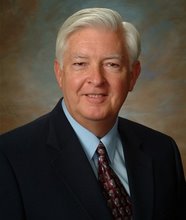Creating Gravity (Part 1)
(Extracted from: The Science Behind Alien Encounters)
www.alienlog.com
Most people are not aware that gravitational fields are produced by means other than a corporal particle of matter. Einstein realized that when he developed his General Theory of Relativity. He showed an interaction between electromagnetic (EM) fields and gravity and in fact predicted that a beam of light (EM) from a star would be deflected 1.75 arc-seconds as it passed the rim of the sun. That prediction was verified by Sir Arthur Eddington in 1919 during a solar eclipse.
If gravity can alter an EM field then it is reasonable to expect the opposite to be true. In 1934, R. C. Tolman derived in his textbook, Relativity, Thermodynamics, and Cosmology, (pages 274 to 285) a relationship between the gravitational field generated by light and that produced by a particle of mass. He concluded that a “pencil” of light was twice as effective as mass in producing a gravitational field.
Louis Rancourt published a paper entitled “Effect of Light on Gravitational Attraction”, Physics Essays: December 2011, Vol. 24, No. 4, pp. 557-561. The paper reported the results of his experiment in which he was able to detect a gravitational effect from a 30 deg laminar beam from a 1.5 Watt red laser. He discovered that when the beam passed close to a freely moving single mass on a torsion pendulum, the mass moved toward the light beam.
At a joint conference on propulsion by AIAA-ASME-SAEASEE, Dr. Dan Brasoveanu and Dr. Constantin Sandu presented landmark papers on gravity propulsion using light for artificial gravitational field (radiation) generation. Their peer reviewed papers on propulsion (AIAA 2007-6203, AIAA-2007- 5128, AIAA-2007-5119, and AIAA-2007-5120) were also published in the proceedings of these two International Conferences and can be downloaded from the AIAA electronic library.
Details of their proposal and the amazing experiments being conducted by Dr. Eugene Podkletnov and his team at the Tampere Institute of Technology (Finland) and Dr. Giovanni Modanese in Italy will be reported in a later article.
